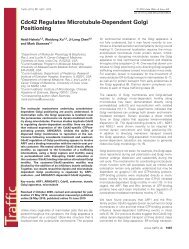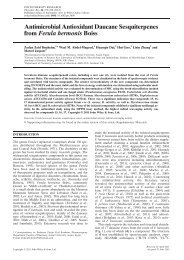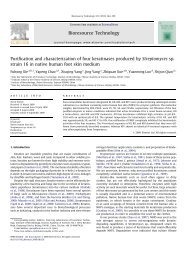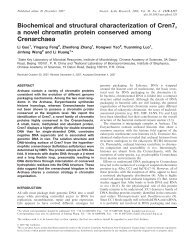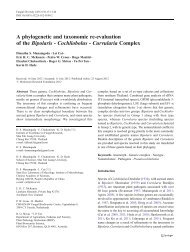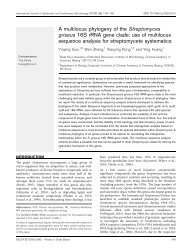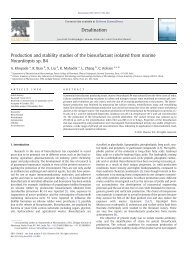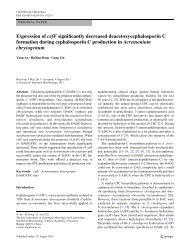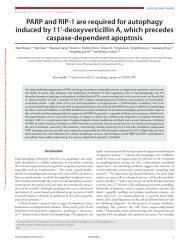Construction of an Industrial Brewing Yeast Strain to Manufacture ...
Construction of an Industrial Brewing Yeast Strain to Manufacture ...
Construction of an Industrial Brewing Yeast Strain to Manufacture ...
You also want an ePaper? Increase the reach of your titles
YUMPU automatically turns print PDFs into web optimized ePapers that Google loves.
770 W<strong>an</strong>g et al.<br />
Fig. 1. The construction <strong>of</strong> related plasmids <strong>an</strong>d recombin<strong>an</strong>t strains.<br />
conical flasks. The yeast pellets from conical flasks were harvested<br />
for the pilot-scale brewing, which was carried out in a 6-l Europe<strong>an</strong><br />
Brewery Convention (EBC) tube with 5-l 10 °P wort at 10 o C for 15<br />
days. Real extract, attenuation degree, <strong>an</strong>d alcohol content in the<br />
fermenting filtrate were measured using <strong>an</strong> Alcolyzer Plus Beer<br />
machine WBA-505B (Kyo<strong>to</strong> Electronics M<strong>an</strong>ufacturing Co., Ltd,<br />
Tokyo, Jap<strong>an</strong>). Acetaldehydes, diacetyl, <strong>an</strong>d main residual sugars<br />
content were measured by GC/MS as described by L<strong>an</strong>daud et al.<br />
[11]. The fermentation broths were refrigerated at 4 o C for 3 days. A<br />
comparative <strong>an</strong>d qualitative test <strong>to</strong> evaluate the sensorial characteristics<br />
<strong>of</strong> the broths was then conducted on-site by six tasting experts, sent<br />
in from the division <strong>of</strong> the Tsingtao Brewery Co., per comp<strong>an</strong>y<br />
quality control procedures.<br />
RESULTS AND DISCUSSION<br />
<strong>Construction</strong> <strong>an</strong>d Selection <strong>of</strong> Recombin<strong>an</strong>t <strong>Strain</strong>s<br />
Since the higher caloric content in beer is mainly caused<br />
by the absence <strong>of</strong> amylolytic activity in brewing yeast,<br />
modification <strong>of</strong> the yeast strain by <strong>of</strong>fering amylolytic<br />
properties is a better way <strong>to</strong> solve this problem. In our<br />
previous study, the LSD1 gene was introduced in<strong>to</strong> the<br />
industrial brewing yeast YSF5 <strong>an</strong>d the engineering strain<br />
T1 was constructed. The properties <strong>of</strong> T1 have been improved;<br />
however, only LSD1 expression could not decrease the<br />
caloric content efficiently, <strong>an</strong>d therefore, <strong>an</strong>other amylolytic





